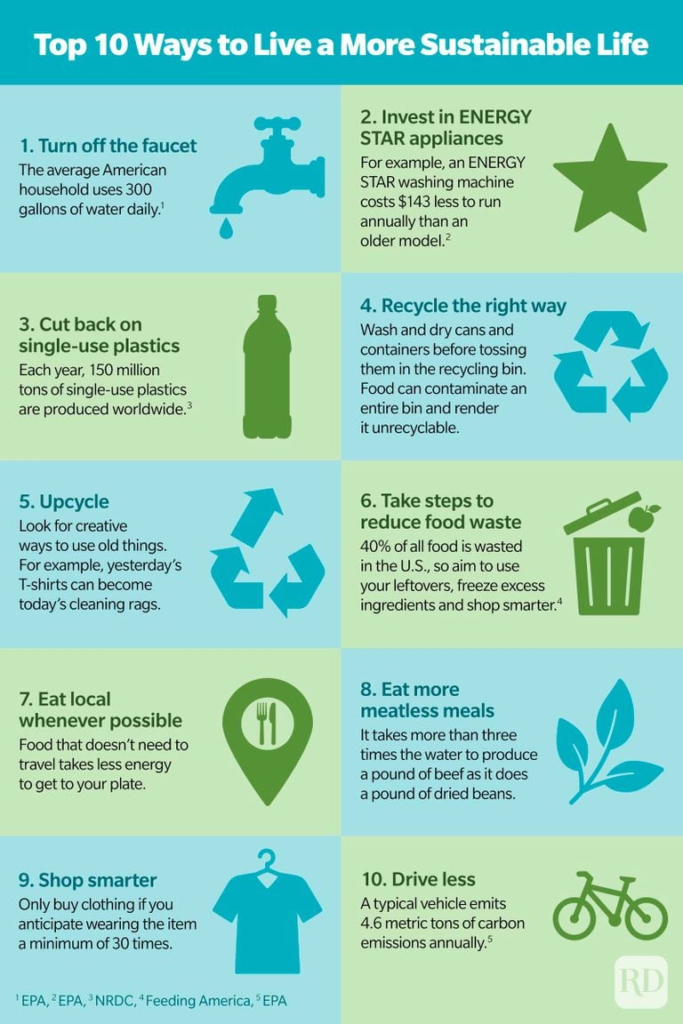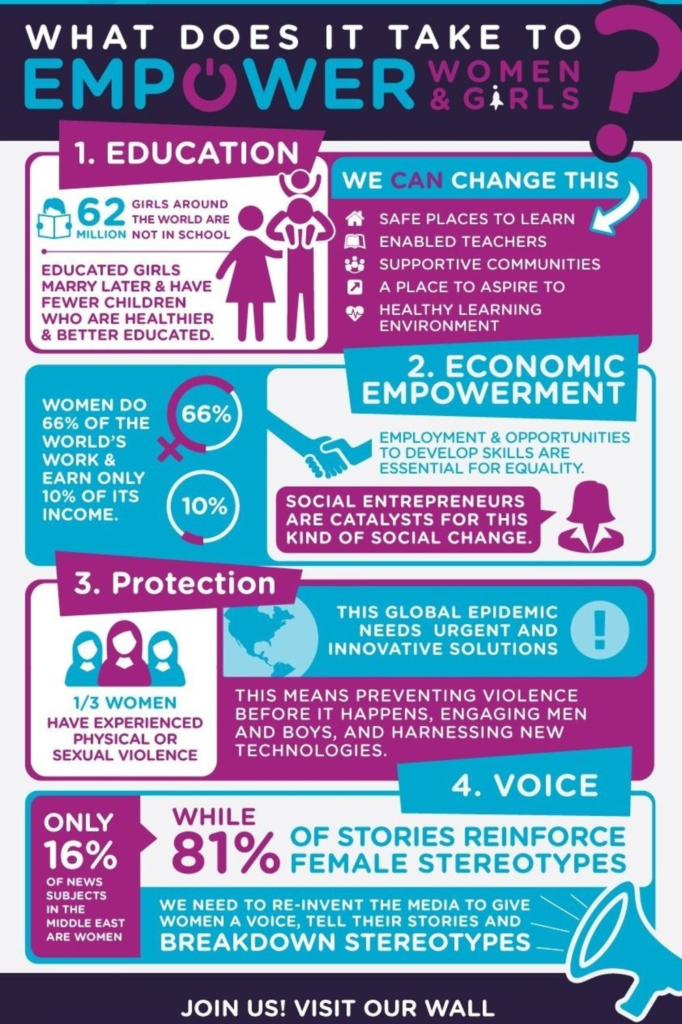|
|
The world’s current population exceeds 8 billion individuals. The figure is rapidly increasing, with the UK-based charity Population Matters pointing out that we will continue to add a billion every 12-15 years.
Several factors are fueling population growth. More people are living at an age where they can have children. Additionally, humans are living longer lives than before.
Cities are also multiplying as more people move into urban areas. Alongside this shift, there’s a noticeable acceleration in migration, with people relocating from one region or country to another for various reasons.
With the increasing population, the Earth can no longer cope. Natural resources are already depleted to the point that only a select few can maintain a decent standard of living. Environmental challenges compound this situation, with climate change and pollution putting more stress on the planet’s systems. They disrupt weather patterns, harm ecosystems, and damage public health.
These issues show that the planet is facing a critical point. Solutions are necessary to ensure everyone can live well without compromising the environment.
In this article, we will deeply dive into overpopulation and explore the most viable solutions for this issue.
From increasing access to family planning services and education to promoting sustainable lifestyles and reducing waste, we’ll examine various strategies for addressing the problem.
We’ll also explore some ethical, political, and economic challenges that must be overcome to implement practical solutions.
Whether you’re an environmentalist concerned about the impact of the human population on the planet or simply curious about this complex issue, this article will provide valuable insights and food for thought.
Overpopulation: An Overview
Before diving into possible solutions for overpopulation, let’s define what overpopulation means and the factors affecting it. Understanding this concept will help set the stage for discussing balancing human needs with environmental sustainability.
Overpopulation is defined as a condition where the number of people living in a particular area exceeds the carrying capacity of that area. It’s not just about space, however. It’s also about the availability of resources like food, water, and energy and the impact on ecosystems. In other words, the demand for resources exceeds the supply.
The world’s population has grown rapidly over the past century. According to the United Nations, by the year 2050, the global population could reach 9.7 billion people and peak at around 10.4 billion by the mid-2080s.
Most of this growth is expected to occur in Africa, where the population has grown at an annual rate of 2.55% from 2010 to 2015. To date, Africa has the highest pace of population growth among all continents. The UN predicts that Asia will also significantly impact future population growth. By 2050, the continent is expected to add roughly one billion people to its already sizable population.
In Europe, the situation contrasts sharply. Here, fertility rates in every country fall below the population replacement level of about two children per woman. These low fertility rates have been a consistent trend across most European nations for many years.
Factors Influencing Overpopulation
A variety of interconnected factors drive overpopulation. Recognizing these causes is crucial for crafting practical solutions to this complex global issue. Some of these key contributors are:
- Increased Life Expectancy: Medical advancements, such as vaccines, antibiotics, and improved healthcare infrastructure, have significantly reduced mortality rates, allowing people to live longer and healthier lives. This demographic shift has contributed to population growth by increasing the number of individuals reaching reproductive age and overall population size. Improved access to healthcare services and better sanitation practices have also played a crucial role in extending life expectancy, particularly in developing countries where infectious diseases are prevalent.
- High Birth Rates: In many regions, birth rates remain high due to cultural values, religious beliefs, and socioeconomic factors. Cultural norms often prioritize large families as a symbol of status, lineage, or societal expectations. Additionally, limited access to comprehensive sex education and gaps in family planning services can contribute to unintended pregnancies and higher birth rates.
- Economic Factors: Economic considerations influence family size decisions and contribute to population growth. In some societies, particularly in agricultural economies, larger families are seen as an asset, as children can contribute to household income through labor or support aging parents in their later years. Moreover, lacking social safety nets and retirement systems may incentivize having more children as insurance against economic uncertainty.
- Migration: Migration, whether driven by economic, political, or environmental factors, plays a significant role in shaping population dynamics. Rural-to-urban and international migration often increase population densities in urban centers and destination countries. These population movements can strain urban infrastructure, exacerbate resource competition, and contribute to social tensions.
- Education Level: Education shapes reproductive behaviors and family size decisions. Higher levels of education, particularly for women, are associated with lower fertility rates and delayed childbearing. Education empowers individuals to make informed decisions about their reproductive health and rights, including access to contraception and family planning services.
The Challenges of Overpopulation
The challenges of overpopulation are multifaceted and have far-reaching implications for human societies and the environment. Addressing these challenges requires a comprehensive understanding of the interconnected issues at play:
- Resource Depletion: With the global population expanding, the demand for essential resources such as water, food, and energy is escalating rapidly. Such heightened demand risks depletion and scarcity, threatening the availability of vital resources for current and future generations. Moreover, unsustainable resource extraction and consumption practices exacerbate environmental degradation and contribute to ecological imbalances, jeopardizing the long-term sustainability of ecosystems and human well-being.
- Environmental Degradation: Overpopulation exerts significant pressure on the environment, leading to widespread environmental degradation and habitat destruction. Overusing land for agriculture, urbanization, and infrastructure development contributes to deforestation, soil erosion, and biodiversity loss, undermining ecosystem resilience and ecological functions. Additionally, increased waste production and pollution further degrade natural habitats and compromise air, water, and soil quality, posing risks to human health and ecosystem integrity.
- Economic Strain: The rapid growth of populations can strain economies, particularly in regions with limited resources and infrastructure. Inadequate investment in essential services such as healthcare, education, and sanitation can hinder economic development and exacerbate poverty and inequality. Moreover, the mismatch between population growth and economic opportunities can lead to unemployment, underemployment, and income disparities, perpetuating economic instability and social unrest.
- Social Challenges: Overpopulation contributes to crowded living conditions, worsening social problems such as housing shortages, urban congestion, and social exclusion. Limited access to affordable housing, healthcare, and education can exacerbate social inequalities and undermine social cohesion. Moreover, overcrowded communities may experience higher levels of crime, violence, and social tension, posing challenges to governance and community resilience.
- Health Concerns: Overpopulated areas often face significant health challenges due to inadequate healthcare infrastructure, limited access to essential services, and the rapid spread of infectious diseases. Insufficient healthcare resources and personnel strain healthcare systems, leading to reduced quality of care and increased mortality rates. Moreover, densely populated areas are more susceptible to disease outbreaks and public health emergencies, highlighting the importance of robust disease surveillance and response mechanisms to mitigate health risks.
- Climate Change: Overpopulation amplifies the drivers of climate change, including greenhouse gas emissions, deforestation, and land-use change. The growing demand for energy, especially from fossil fuels, drives increased carbon dioxide (CO2) and other greenhouse gas emissions, exacerbating global warming and its associated impacts, including melting ice caps, rising sea levels, and shifts in precipitation patterns. The consequences of climate change are widespread, affecting ecosystems, agriculture, water resources, and human health, with disproportionate impacts on vulnerable populations, including low-income communities and developing countries.
- Food Security: Feeding a growing global population presents significant food security and agricultural sustainability challenges. As the U.N. Secretary-General António Guterres said, “We are on the way to a raging food catastrophe.” Expanding agricultural land to meet rising demand for food can lead to habitat destruction, biodiversity loss, and soil degradation, compromising the resilience of agroecosystems. Moreover, climate change exacerbates food insecurity by altering precipitation patterns, increasing the frequency of extreme weather events, and disrupting agricultural productivity.
- Political Issues: High population growth rates can strain governance systems and exacerbate political tensions, leading to conflicts over resources, inadequate service provision, and migration pressures. Inadequate urban planning and infrastructure development may fuel social unrest and political instability, undermining peace, security, and sustainable development efforts.
You can read more about how population affects the environment here and explore the pros and cons of high population density here.

Source: MPHOnline.org
Solutions to Overpopulation
Given the challenges of overpopulation, it’s clear that we need to take action to address this issue. The good news is that there are a range of strategies that can help us do just that.
Some of the most effective solutions include:
- Family Planning Services and Education
Access to family planning services and education is crucial in addressing the challenges of overpopulation and promoting sustainable population growth. We can mitigate the negative impacts of rapid population growth by empowering individuals with the knowledge and resources to make informed decisions about their reproductive health.
Family planning services encompass a range of interventions aimed at assisting individuals and couples in controlling their fertility and achieving their desired family size. These services often include counseling, contraceptive methods provision, and reproductive health education.
Several types of family planning methods are available, each offering different levels of effectiveness and suitability for individuals’ needs:
- Hormonal Contraceptives: Hormonal contraceptives, such as birth control pills, patches, and injectables, contain synthetic hormones that prevent ovulation and inhibit fertilization. These methods are highly effective when used correctly and consistently, offering individuals reliable contraception options to prevent unintended pregnancies.
- Barrier Methods: Barrier methods, such as condoms, diaphragms, and cervical caps, create a physical barrier that prevents sperm from reaching the egg. These methods are accessible, affordable, and do not have long-term effects on fertility, making them suitable for individuals who prefer non-hormonal contraception or have contraindications to hormonal methods.
- Long-Acting Reversible Contraceptives (LARCs): LARCs, such as intrauterine devices (IUDs) and implants, are highly effective contraceptive methods that provide long-term protection against pregnancy. IUDs are small, T-shaped devices inserted into the uterus, where they release hormones or copper to prevent fertilization and implantation. Implants are small rods inserted under the skin of the arm, releasing hormones that prevent ovulation. LARCs offer convenience, efficacy, and reversible contraception, making them suitable options for individuals seeking reliable, low-maintenance birth control.

In addition to providing access to family planning services, education is also critical.
Educating individuals about reproductive health, family planning, and the benefits of smaller family sizes can help reduce unintended pregnancies and promote more sustainable population growth. Education can take many forms, including school-based sex education programs, community outreach, and media campaigns.
However, there are still many challenges to ensuring universal access to these services. Some of the key challenges include:
- Lack of access to services: Many people worldwide still lack access to family planning services, particularly in low-income countries. Reasons for that may include lack of health infrastructure, limited funding, or cultural barriers.
- Stigma and misinformation: In some cultures and communities, a stigma may be attached to family planning methods. Additionally, there may be misinformation about the safety and efficacy of these methods, which can discourage their use.
- Political opposition: Family planning is often contentious in political debates, particularly in conservative or religious circles. Opposition to family planning can lead to limited funding for services, restricted access, and even legal barriers.
Despite these challenges, there is a growing recognition of the importance of family planning as a critical solution to overpopulation.
A good example of this is the Population Media Center, which, over the years, has spearheaded media programs that empower women’s rights and promote family planning through collaborations with governments, NGOs, and individuals.
Some governments, NGOs, and other organizations are working to increase access to services and education, reduce stigma and misinformation, and promote policies that support reproductive health and rights. Such efforts have led to significant achievements in improving reproductive health outcomes and promoting sustainable population growth. Several vital milestones show the transformative impact of family planning interventions as highlighted in the studies conducted by Johns Hopkins Center for Communication Programs and RAND Corporation:
- Reduction in Maternal Mortality: Family planning programs have contributed to a substantial decline in maternal mortality rates by enabling women to delay and space their pregnancies, reducing the risks associated with high-risk pregnancies and unsafe abortions. In a significant study by the Johns Hopkins Bloomberg School of Public Health, researchers found that contraceptives play a crucial role in saving lives by preventing over 272,000 maternal deaths from childbirth annually. The team also explored the potential impact on maternal health if the current global demand for contraception was fully met. They estimated that addressing the gap could further reduce maternal deaths by an impressive 30 percent.
- Prevention of Unintended Pregnancies: By providing individuals and couples with access to a variety of contraceptive methods, family planning services have helped to prevent unintended pregnancies and reduce the incidence of unsafe abortions. According to RAND Corporation research, family planning interventions have averted millions of unintended pregnancies annually, contributing to improved maternal and child health outcomes.
- Empowerment of Women and Girls: Access to family planning services empowers women and girls to make informed decisions about their reproductive health and exercise control over their bodies and futures. By enabling women to delay motherhood, pursue education, and participate in the workforce, family planning promotes gender equality and economic empowerment. Studies cited by the Johns Hopkins Center for Communication Programs demonstrate that increasing access to family planning can lead to higher levels of education, employment, and economic opportunities for women and girls.
- Reduction in Infant and Child Mortality: Family planning interventions have been linked to reductions in infant and child mortality rates by allowing parents to plan and space their pregnancies, ensuring optimal birth spacing and maternal health.
- Improvement in Maternal Health Services: Family planning programs often integrate maternal health services, including prenatal care, postnatal care, and skilled birth attendance, to ensure comprehensive care for women throughout the reproductive lifecycle. By promoting access to essential maternal health services alongside contraception, family planning contributes to improved maternal health outcomes and reduces the burden of maternal morbidity and mortality.
- Promotion of Sustainable Development: Family planning is a cornerstone of sustainable development efforts, facilitating progress across multiple sectors, including health, education, poverty reduction, and environmental sustainability. Family planning supports efforts to achieve the Sustainable Development Goals (SDGs) and create more resilient and equitable societies by addressing population growth and demographic challenges.
- Sustainable Lifestyle
Promoting more sustainable lifestyles is recognized as another key solution to addressing overpopulation and mitigating its impact on the environment. Making environmentally friendly choices in our daily lives can significantly reduce our ecological footprint and contribute to a more sustainable future.

According to the UN Environment Programme, transitioning to sustainable lifestyles involves adopting behaviors and practices that prioritize environmental conservation and resource efficiency. Some sustainable lifestyle choices individuals can make include:
- Reducing meat consumption: Meat production is a major contributor to greenhouse gas emissions and deforestation. Research from organizations like the Food and Agriculture Organization of the United Nations (FAO) highlights the environmental impact of livestock farming associated with growing populations and incomes and changing food preferences. The organization noted that the livestock sector is one of the biggest contributors to the most critical environmental problems on both local and global scales, including greenhouse gas emissions, high water consumption, and reduction of biodiversity resulting from land use intensification. By reducing our meat consumption or switching to plant-based diets, we can help to reduce our environmental footprint.

- Reducing energy consumption: Conserving energy is essential for reducing carbon emissions and combating climate change. Utilizing energy-efficient appliances, such as ENERGY STAR-rated products, and adopting energy-saving habits, such as turning off lights and electronics when not in use, can help individuals reduce their energy consumption. Reliable sources like the International Energy Agency (IEA) guide energy-efficient practices and technologies.
- Reducing waste: Waste reduction, recycling, and composting are critical for conserving natural resources and minimizing environmental pollution. By reducing single-use plastics, minimizing packaging waste, and practicing responsible consumption habits, individuals can contribute to a circular economy and reduce their ecological footprint.
- Promoting sustainable transportation: Transportation is a significant source of greenhouse gas emissions and air pollution. The United Nations Environment Programme (UNEP) emphasizes the importance of sustainable transportation solutions, such as public transit, biking, and walking. Investing in public transportation infrastructure, expanding bike lanes, and promoting carpooling and ridesharing initiatives can help reduce reliance on fossil fuels and promote cleaner, more sustainable transportation options.
- Conserving water: Water conservation is essential for preserving freshwater resources and ensuring access to clean water for future generations. Organizations like the World Water Council and the UN advocate for sustainable water management practices, such as reducing water waste, implementing water-efficient technologies, and protecting water ecosystems. By adopting water-saving habits, such as fixing leaks, installing water-efficient fixtures, and practicing responsible irrigation, individuals can contribute to water conservation efforts.
While these lifestyle changes may seem small, they significantly lead to reductions in our environmental impact over time.
In addition to reducing our carbon footprints, promoting sustainable lifestyles can help shift cultural attitudes and encourage broader societal transformations.
| Category | Practices and Actions |
| Eco-Friendly Practices | Recycling and Waste Reduction: Embracing recycling practices and minimizing waste generation are tangible actions individuals can take to reduce their environmental impact. When adopted widely, these practices contribute to resource conservation and reduce pollution. Public Transport and Sustainable Commuting: Choosing public transportation, biking, or walking instead of personal vehicles reduces carbon emissions and sets an example for others to adopt sustainable commuting practices. This behavior encourages the development of eco-friendly transportation infrastructure. |
| Consumer Choices | Supporting Local and Sustainable Products: Opting for locally sourced and sustainably produced goods sends a powerful message to businesses. Consumer demand for environmentally friendly products can drive market trends and incentivize firms to adopt more sustainable practices. Ethical Consumerism: Making informed choices about the products we purchase, considering factors such as ethical sourcing, fair labor practices, and environmental impact, can contribute to a shift in consumer culture toward more sustainable and responsible consumption. |
| Community Involvement | Local Sustainability Initiatives: Active participation in local sustainability initiatives, such as community gardens, recycling programs, or tree planting campaigns, fosters a sense of community and shared responsibility. These initiatives showcase the positive outcomes of collective action in addressing environmental challenges. Collaborative Efforts for Change: Engaging with neighbors and community members to address local environmental issues creates a sense of shared purpose. Collective efforts amplify the impact of individual actions and promote a culture of sustainability within communities. |
| Educational Outreach | Environmental Education Programs: Education on sustainability, environmental conservation, and the interconnectedness of human activities with the natural world is vital. Educational outreach initiatives, whether in schools or community workshops, empower individuals with the knowledge to make informed choices for a sustainable future. Promoting Lifelong Environmental Values: Teaching the next generation about the importance of sustainability instills lifelong environmental values. Children and young adults exposed to eco-conscious education are more likely to carry these values into adulthood, creating a ripple effect for future generations. |
| Policy Advocacy | Environmental Protection Policies: Advocating for policies prioritizing environmental protection, renewable energy, and sustainable agriculture is a strategic approach to fostering systemic change. This involves supporting legislative measures incentivizing businesses to adopt sustainable practices and holding policymakers accountable for environmentally conscious decision-making. Renewable Energy Adoption: Advocacy for policies promoting the widespread adoption of renewable energy sources contributes to the transition toward a more sustainable energy landscape. This can include supporting government incentives, subsidies, and regulations that encourage using clean and renewable energy. |
However, it can still be challenging to fully embrace a sustainable lifestyle due to various factors, including:
- Economic barriers: Sustainable lifestyle choices can sometimes be more expensive than less sustainable options, particularly in the short term. This can create economic barriers for those who cannot afford to make more environmentally friendly choices. However, it’s crucial to do as much as one can.
- Cultural barriers: Certain lifestyle choices may be deeply ingrained and difficult to change in some cultures and communities. For example, meat consumption may be culturally significant in some communities, making it difficult to promote plant-based diets. That’s why education is key when it comes to sustainability.
- Lack of infrastructure: In many areas, infrastructure for sustainable transportation options such as public transportation or bike lanes may be lacking or inadequate, making it difficult for people to make more sustainable choices. As such, lobbying for infrastructure improvements can be an important way to promote sustainable lifestyles.
- Education and Empowerment
Education and empowerment also stand as critical pillars in addressing the multiple challenges of overpopulation. By tackling social, economic, and cultural factors, they offer pathways to sustainable population growth and improved well-being for communities worldwide.
Here’s an expanded look at how education and empowerment can address the complexities of overpopulation:
Promoting Girls’ Education
- Reducing Fertility Rates: Educating girls and women has been identified as one of the most effective strategies for reducing fertility rates and achieving sustainable population growth. Research from the Guttmacher Institute highlights the correlation between higher levels of education among women and lower fertility rates.
- Preventing Child Marriage: Access to education can help delay marriage for girls, reducing the likelihood of early and unintended pregnancies. Initiatives that support girls’ education contribute to breaking the cycle of poverty and promoting reproductive autonomy.
- Improving Reproductive Health: Education equips girls with knowledge about reproductive health and family planning, empowering them to make informed choices about their bodies and futures. This includes access to comprehensive sex education and reproductive health services, as advocated by organizations like the World Health Organization (WHO) and UNICEF.
- Advancing Gender Equality: Promoting girls’ education fosters better equal gender norms and opportunities, challenging traditional roles and empowering girls to pursue their aspirations. Achieving gender parity in education is a matter of human rights and a key driver of social and economic development.
Promoting Economic Empowerment
- Poverty Reduction: Economic empowerment initiatives, such as microfinance programs and vocational training, offer pathways out of poverty and contribute to more sustainable population growth. The World Bank emphasizes the importance of economic opportunities in addressing demographic challenges.
- Job Creation and Entrepreneurship: Providing individuals, particularly women and marginalized communities, access to job training and entrepreneurship support can lead to economic independence and resilience. In turn, this can positively impact family planning decisions and household well-being.
- Breaking the Poverty-Overpopulation Cycle: Addressing poverty through economic empowerment disrupts the cycle of high fertility rates associated with poverty. Empowered individuals are better equipped to make informed decisions about family size and reproductive health.
Promoting Gender Equality
- Empowering Women’s Reproductive Choices: Gender equality is intricately linked to reproductive autonomy, as women empowered with education and resources are better positioned to make decisions about their reproductive health. Organizations like UN Women advocate for gender-responsive policies and programs that promote women’s rights and agency.
- Political Representation: Ensuring women’s representation in decision-making processes, including healthcare and family planning policies, is essential for addressing gender disparities and promoting reproductive rights. Political empowerment initiatives contribute to shaping inclusive and equitable societies.
- Healthcare Access: Gender equality ensures equitable access to healthcare services, including maternal and reproductive healthcare. Strengthening healthcare systems and eliminating barriers to access are crucial steps in promoting women’s health and well-being.
YouTube Source:
Promoting Human Rights
- Access to Basic Services: Guaranteeing individuals’ fundamental human rights, such as access to healthcare, education, and reproductive health services, is essential for achieving sustainable population growth. Organizations like Amnesty International advocate for policies and interventions that uphold human rights standards and promote social justice.
- Addressing Socioeconomic Disparities: Human rights-based approaches to development focus on addressing socioeconomic disparities and ensuring equitable access to opportunities and resources. By tackling root causes of inequality, such as discrimination and marginalization, these approaches contribute to fostering more equitable and sustainable societies.

- Sustainable Development
Sustainable development is a holistic approach to development that seeks to balance economic, social, and environmental goals. This approach recognizes that economic growth and development must be sustainable over the long term and that environmental and social factors must be considered.
Sustainable development can help address overpopulation by promoting economic growth and development while protecting the environment and promoting social equity. As former UN Secretary-General Ban-Ki-moon remarked during the Working Dinner Session on “Sustainable Development for All” at the 2013 G20 Saint Petersburg Leaders’ Summit:
“Sustainable development is the pathway to the future we want for all. It offers a framework to generate economic growth, achieve social justice, exercise environmental stewardship and strengthen governance.”
Some strategies for promoting sustainable development include:
| Strategy | Actions |
| Investing in renewable energy | Renewable energy is a key component of sustainable development, as it reduces greenhouse gas emissions and promotes energy independence. Governments can stimulate renewable energy production through incentives, R&D investments and financing, and supportive policies. Renewable sources like solar, wind, and hydroelectric power offer viable alternatives to fossil fuels. By transitioning to clean energy, societies can mitigate climate change impacts and foster long-term sustainability. |
| Promoting sustainable agriculture | Sustainable agriculture practices can help reduce the environmental impact of agriculture while increasing food security and supporting rural development. Once again, governments can incentivize sustainable farming methods such as organic farming, agroforestry, and crop rotation. Embracing techniques that conserve soil, water, and biodiversity ensures resilience to climate change and fosters healthy ecosystems. By prioritizing sustainable agriculture policies and investments, communities can achieve food sovereignty while preserving natural resources for future generations. |
| Investing in infrastructure | Sustainable infrastructure, such as public transportation, green buildings, and energy-efficient water and sewage systems, can help reduce greenhouse gas emissions, improve public health, and promote economic growth. Governments can invest in sustainable infrastructure by providing funding, implementing policies that require sustainable design, and promoting public-private partnerships. |
| Promoting Circular Economy Practices | Embracing circular economy principles is essential for sustainable development. By minimizing waste generation, maximizing resource efficiency, and promoting product reuse and recycling, societies can reduce environmental impacts while fostering economic growth. Governments can support circular economy initiatives through policies that incentivize sustainable production and consumption patterns, such as extended producer responsibility programs and waste management regulations. By transitioning to a circular economy model, communities can create closed-loop systems that preserve resources and minimize environmental degradation. |
| Fostering Sustainable Urban Planning | Sustainable urban planning strategies are critical for managing population growth and promoting livable, resilient cities. Compact urban design, mixed land use, and efficient public transportation systems can reduce urban sprawl, minimize resource consumption, and enhance community well-being. Governments can implement zoning regulations, invest in green infrastructure, and prioritize affordable housing to create sustainable urban environments. By fostering walkable neighborhoods, green spaces, and accessible amenities, cities can accommodate growing populations while minimizing environmental impacts and improving quality of life. |
| Promoting Sustainable Consumption and Production | Embracing circular economy principles is essential for sustainable development. By minimizing waste generation, maximizing resource efficiency, and promoting product reuse and recycling, societies can reduce environmental impacts while fostering economic growth. Governments can support circular economy initiatives through policies that incentivize sustainable production and consumption patterns, such as extended producer responsibility programs and waste management regulations. By transitioning to a circular economy model, communities can create closed-loop systems that preserve resources and minimize environmental degradation. |
| Investing in Education and Awareness | Education and awareness-raising efforts are crucial for fostering a culture of sustainability and promoting informed decision-making. Governments can invest in environmental education programs, community outreach initiatives, and media campaigns to raise awareness about sustainable development principles. By integrating sustainability into school curricula, promoting eco-conscious lifestyles, and facilitating public dialogues on environmental issues, societies can empower individuals to become agents of positive change. Building a knowledgeable and engaged citizenry is key to achieving sustainable development goals and addressing overpopulation challenges effectively. |
Although the sustainable development strategies above offer pathways to address overpopulation while fostering economic prosperity, environmental stewardship, and social equity, implementing them comes with its own set of challenges:
- Lack of political will: Sustainable development often requires policy changes and investments in infrastructure and education. However, some governments may be reluctant to make these changes, particularly if they are perceived as being costly or unpopular. Overcoming political inertia requires strong leadership, public advocacy, and the prioritization of long-term environmental and social objectives.
- Lack of funding: Sustainable development also requires funding, both from governments and from private sources. Sadly, there may be limited funding available for sustainable development initiatives, particularly in low-income countries. Overcoming these barriers necessitates innovative financing mechanisms, incentives for sustainable investments, and partnerships between the public and private sectors.
- Resistance to change and lack of awareness: Traditional practices and entrenched interests can hinder the adoption of sustainable development strategies. Resistance to change may stem from a lack of awareness or understanding of sustainability issues among individuals, communities, and industries. Education, awareness-raising campaigns, and stakeholder engagement are essential for overcoming resistance and fostering a culture of sustainability.
- Lack of coordination: Sustainable development requires coordination across multiple sectors and stakeholders, including governments, businesses, NGOs, and communities. However, achieving effective coordination can be challenging due to differing priorities, competing interests, and complex multi-stakeholder dynamics. Overcoming coordination challenges requires robust governance structures, inclusive decision-making processes, and mechanisms for stakeholder engagement and dialogue.
International organizations such as the United Nations have made sustainable development a priority. There are also multiple initiatives underway to promote sustainable economic growth, protect the environment, and invest in education and health.
You may refer to the video below for some of the projects organized based on the United Nations Sustainable Goals (SDGs) worldwide and their progress as of 2018. The Asia Society also has a comprehensive list of projects that are aligned with the aforementioned goals.
Youtube Video:
- Immigration Policies
Data from OECD:
Expanding immigration policies presents a potential avenue for addressing overpopulation challenges, particularly in regions grappling with aging populations and declining birth rates.
Immigration offers two main benefits in the context of overpopulation solutions:
- It can counterbalance the demographic trends of aging populations and low birth rates observed in certain regions. Immigrants, typically of working age, contribute to the labor force and help sustain economic productivity, which is crucial for supporting aging populations and ensuring economic vitality.
- It has the potential to alleviate pressure on densely populated areas by redistributing population growth to regions with lower population densities. This can help alleviate strain on infrastructure, housing, and natural resources in overcrowded urban centers while fostering economic development and revitalization in underpopulated areas.
Despite these potential benefits, immigration policies are often contentious, especially in countries where anti-immigrant sentiment prevails. Political debates surrounding immigration frequently center on concerns about job competition, the strain on public services, cultural integration, and national identity.
In a comprehensive 2019 study by the Pew Research Center, public perceptions of immigrants were measured across 18 countries. The survey revealed that majorities in 10 of the countries, including some with the highest numbers of migrants like the United States, Germany, the United Kingdom, France, Canada, and Australia—each hosting upwards of 7 million immigrants as of 2017—view immigrants positively, seeing them as a source of strength rather than a burden.
In contrast, attitudes toward immigrants were less favorable in five other countries. Hungary, Greece, South Africa, Russia, and Israel were found to have majority views that perceive immigrants as a burden. Notably, excluding Russia, each of these countries hosted fewer than 5 million immigrants at the time of the survey.
The Netherlands presented a split in public opinion regarding the impact of immigration. Italy and Poland showed more inclination towards viewing immigrants as a burden. However, there were also significant portions of their populations that did not express a definitive view either for or against.
In scenarios where public opinion on immigration is divided or leaned towards regarding immigrants as a burden, policymakers are often caught in a complex dilemma. On one side, there’s the practical necessity to address demographic imbalances, such as aging populations or labor shortages, which immigration can help alleviate. On the other hand, there’s the imperative to respond to domestic political pressures that may be fueled by economic concerns, cultural fears, or security issues linked to immigration.
With strategic policy interventions, immigration can be managed effectively to address overpopulation challenges while mitigating socio-political tensions.
Comprehensive immigration policies that prioritize integration, economic contribution, and social cohesion can facilitate the smooth integration of immigrants into host societies while maximizing the benefits of demographic diversity.
To optimize immigration policies as a solution to overpopulation, policymakers must consider factors such as labor market needs, social integration programs, education and skills development initiatives, and measures to combat discrimination and xenophobia.
By adopting a holistic approach to immigration management, countries can harness the potential of immigration to address demographic challenges and promote sustainable population growth.
Both the OECD and the UN offer a comprehensive look at international migration policies, including the top rationale for their implementation.
- Technology and Innovation
Finally, technology and innovation can also play a pivotal role in addressing the multifaceted challenges of overpopulation. Several cutting-edge solutions have recently emerged as critical tools in enhancing efficiency, promoting sustainability, and mitigating overpopulation’s strain on natural resources.
- Artificial Intelligence (AI) and Automation: AI-driven technologies and automation systems offer unprecedented opportunities to optimize resource utilization and streamline processes across various sectors. From predictive analytics in agriculture to smart energy management systems, AI and automation enhance efficiency, reduce waste, and minimize environmental impact.
- Robotics: Robotics revolutionize industries ranging from manufacturing to healthcare, offering solutions to labor shortages and increasing productivity. In agriculture, robotic systems automate tasks such as planting, harvesting, and monitoring crops, improving agricultural efficiency while reducing the need for manual labor and land use.
- Vertical Farming: Vertical farming represents a paradigm shift in agriculture, enabling food production in vertically stacked layers within controlled indoor environments. By utilizing hydroponic or aeroponic systems and LED lighting, vertical farms maximize space utilization, conserve water, and minimize environmental footprint compared to traditional farming methods.
- Biotechnology and Genetic Engineering: Innovations in biotechnology, gene editing, and genetic engineering hold promise for addressing food security challenges and resource scarcity. Genetically modified crops engineered for drought resistance, pest resilience, or enhanced nutritional content offer sustainable alternatives to conventional agriculture, reducing the pressure on land and water resources.
- Renewable Energy Technologies: The transition to renewable energy sources such as solar, wind, and hydroelectric power plays a crucial role in mitigating environmental degradation and reducing greenhouse gas emissions associated with overpopulation. Advancements in energy storage technologies and grid integration enhance the reliability and scalability of renewable energy systems, accelerating the shift toward a sustainable energy future.
While these technological solutions offer promising avenues for addressing overpopulation, ethical and environmental considerations must be paramount. Concerns regarding data privacy, job displacement, genetic manipulation, and ecological impact necessitate robust ethical frameworks and regulatory oversight to ensure responsible deployment and minimize adverse consequences.
By balancing technological innovation with ethical and environmental stewardship, society can harness the transformative potential of technology to navigate the challenges posed by overpopulation.
Conclusion
Overpopulation is a complex issue with far-reaching implications for the environment, society, and economy. However, it is also an issue that can be addressed through a range of solutions.
From increasing access to family planning services and education to promoting sustainable lifestyles and reducing waste, there are many strategies we can use to promote more sustainable population growth.
Policies such as immigration reform and investments in technology and innovation may offer additional solutions for addressing overpopulation.
Ultimately, the key to effective overpopulation solutions lies in recognizing the importance of taking a holistic approach that considers social, economic, environmental, and ethical factors.
By utilizing these strategies together—and engaging multiple stakeholders—we can create a more balanced world where everyone has access to the resources they need to thrive.












No Comments